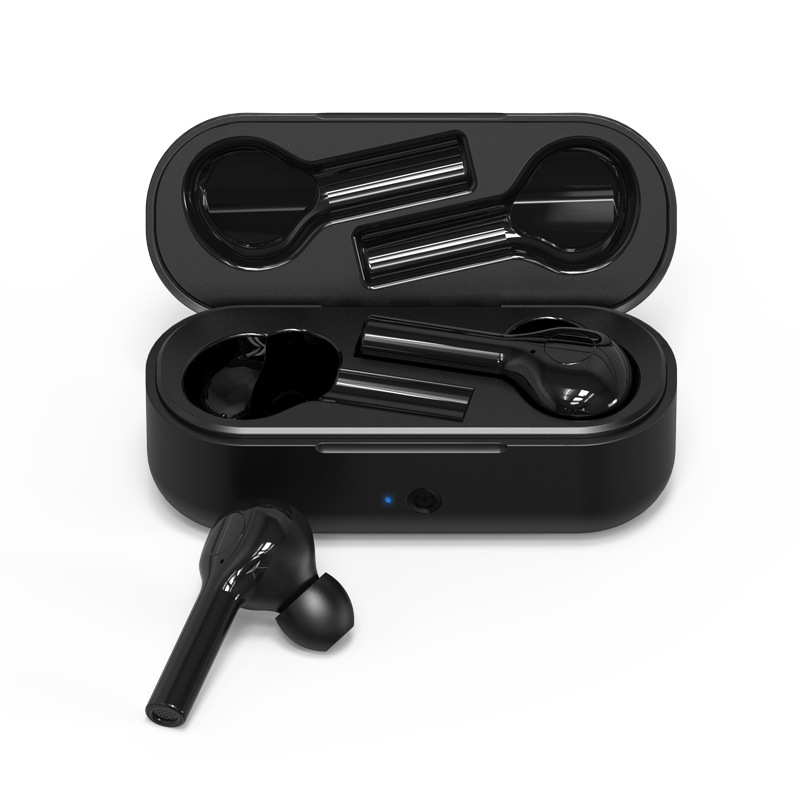Injection Molding Process and Design of TWS Bluetooth Headset Accessories
Hardware Composition of Bluetooth Headset
Almost all the visible plastic and metal components, housings, buttons, fittings, and decorative parts of a Bluetooth headset are manufactured using some form of injection molding for optimum aesthetics, ergonomics, quality, and cost. The internal electronics are then assembled and fit into these plastic molded structures.
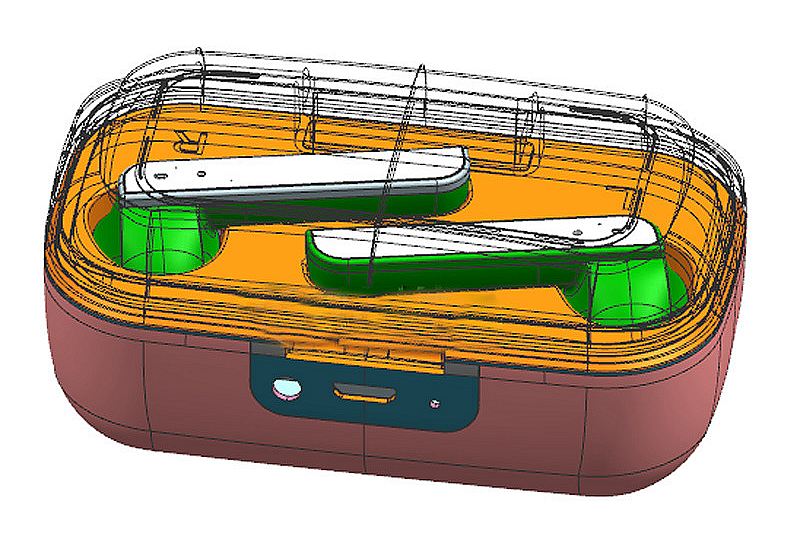
Neway's diverse manufacturing methods, ranging from injection molding to precision casting and CNC machining, are instrumental in producing high-quality components for Bluetooth headsets. Collectively, these components contribute to the seamless functionality, durability, and user satisfaction of the end product.
However, most TWS hardware was manufactured by plastic injection molding, zinc alloy die-casting, and metal injection molding.
Plastic injection molding:
They are used to make plastic parts, such as Bluetooth headset Housing and Casing, Battery Enclosure, Microphones, and speaker components. Some can also be made of zinc alloy die-casting with metal casings.
Zinc alloy die-casting:
They are used for die-casting charging compartment counterweights, tail plugs, hinges, etc.
Metal injection molding (MIM):
For injected metal accessories such as hinges and casings, Antenna Integration of high-end Bluetooth headsets.
Plastic Injection Molding Parts
In the realm of Bluetooth headset accessories, Neway's expertise in plastic injection molding plays a pivotal role in crafting top-tier products. Let's delve into the intricate details of how various components are meticulously manufactured, showcasing the prowess of Neway's one-stop service for custom parts.
Advanced Plastic Injection Molding for Earbud Components:
Neway's commitment to delivering unparalleled comfort and durability in Bluetooth headset accessories begins with the advanced plastic injection molding of earbud components. The choice of materials, including ABS, polycarbonate, and rubberized TPE, is a testament to the versatility offered by Neway's one-stop service. The injection molding process ensures the precise replication of designs and the consistent quality of each earbud housing.
Precision Molded Eartips for Enhanced Comfort and Seal:
The ear tips, molded from soft silicone or TPE materials, provide a snug seal within the ear canal. Neway's precision molding techniques contribute to the uniformity of these components, ensuring a consistent level of comfort and effective sound isolation for users. The attention to detail in the molding process underscores Neway's dedication to creating accessories that prioritize user experience and audio performance.
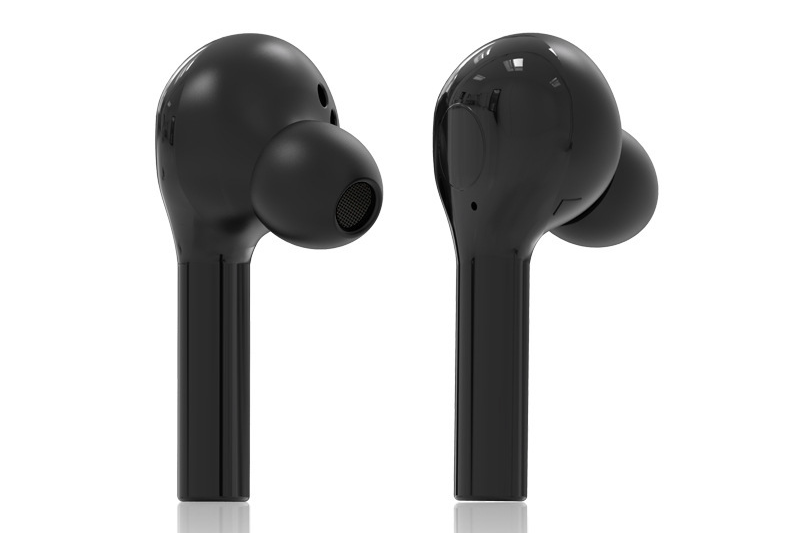
Innovative Molding for Intricate Housing/Shell Details:
The housing or shell of Bluetooth headset accessories, housing intricate electronics, undergoes innovative plastic injection molding at Neway. This process allows for incorporating fine details, such as ports and buttons, with exceptional precision. The use of robust plastics like ABS or polycarbonate guarantees the structural integrity of the housing, providing a reliable enclosure for the sophisticated electronics within.
Efficient Battery Enclosure through Injection Molding:
Neway's injection molding proficiency extends to creating efficient battery enclosures for Bluetooth headsets. The molding process not only ensures the durability of the enclosure but also facilitates efficient assembly, contributing to the overall productivity of the manufacturing process. This efficiency translates into reliable and long-lasting battery performance for end-users.
Decorative Covers:
Aesthetic appeal is vital in the competitive market for Bluetooth accessories. Plastic injection molding facilitates the creation of decorative covers that complement the headset's design. The process enables incorporating intricate details, vibrant colors, and varied textures, achieving a visually striking appearance. Tolerances for these covers typically range within ±0.2mm, ensuring uniformity and consistency across mass production.
Noise Isolation Mounts:
Internal noise isolation mounts, molded from rubber or silicone, enhance the headset's audio performance. These mounts are designed with specific Shore hardness values (e.g., 40-60 Shore A) to achieve optimal flexibility while effectively isolating external noise. Plastic injection molding ensures the creation of mounts with precise shapes and dimensions, contributing to the headset's noise-canceling capabilities.
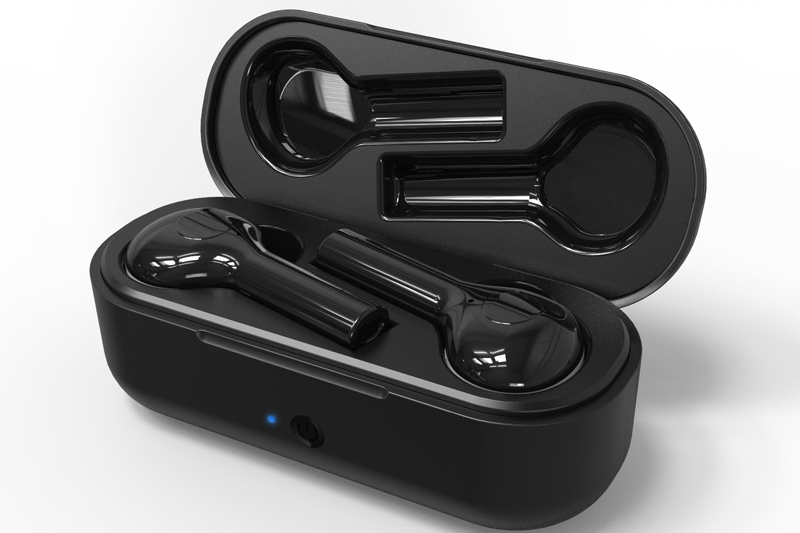
Stems/Arms: The stem or arm that links the earbuds to the headband demands a robust yet sleek design. Plastic injection molding allows for the creation of these components with impeccable precision.
The process involves:
Injecting molten plastic material into a mold cavity.
Ensuring consistent dimensions.
Tight tolerances (often within ±0.1mm).
It's a flawless finish.
This precision is crucial for the seamless integration of the stems/arms, providing durability and a refined aesthetic to the headset.
Control Buttons:
The control buttons on Bluetooth headsets require a tactile and responsive feel for effortless user interaction. Through plastic injection molding, silicone or rubber material is precisely molded into buttons that offer flexibility and a satisfying tactile response. The method allows for designing intricate shapes and textures, ensuring each button's functionality while catering to user comfort, meeting force sensitivity requirements within 20-80 grams, and delivering a lifespan of up to 100,000 presses.
Die-Casting for Premium Housing Quality:
In certain instances, Neway takes Bluetooth headset accessory manufacturing to the next level by employing zinc die-casting techniques for housing/shell production. Utilizing zinc alloy shells adds a touch of luxury, providing a specific weight and texture that enhances the product's overall aesthetics. This premium die-casting process aligns with Neway's commitment to delivering high-quality and visually appealing accessories in the competitive tech market.
Metal Injection Molding for High-End Hinges and Housings
Zinc alloy can improve Bluetooth headsets' texture and surface performance to a certain extent. However, during long-term use, the coating on the zinc alloy is easy to wear, peel or fall off. The durability and stability of stainless steel Hinges and Housings made by the MIM process will significantly improve after Physical Vapor Deposition (PVD) treatment.
Plastic Injection Molding Introduction
Plastic injection molding is a standard manufacturing process used to efficiently produce high volumes of plastic parts. The process starts by melting down plastic pellets in the injection molding machine and injecting this molten plastic into a steel mold cavity under high pressure. The plastic solidifies, taking the shape of this mold cavity. The part is then ejected, and the mold closes for the next cycle. Various thermoplastic and thermoset plastics like ABS, nylon, and polyethylene are used. Injection molding allows complex 3D geometries with tight tolerances and minimum material waste. Parts have repeatable high quality. Automation makes injection molding cost-effective for the mass production of plastic components. It is famous for consumer goods, automotive parts, electronic enclosures, and other plastic items.
Neway's expertise in plastic injection molding is a cornerstone in producing high-quality Bluetooth headset accessories, showcasing many advantages for crafting top-tier hardware components.
Material Expertise and Versatility:
Comprehensive Material Selection: Neway's mastery extends to a comprehensive selection of materials, including ABS, polycarbonate, and rubberized TPE. Each material is chosen strategically to optimize different aspects, such as durability, flexibility, and comfort.
Adaptive Material Application: The ability to adapt materials to specific components showcases Neway's expertise. For instance, rubberized TPE is used for earbud housing to enhance comfort and durability, and ABS or polycarbonate is used for intricate parts to ensure structural integrity.
Precision in Design Replication:
Micro-Level Precision: Neway's commitment to precision goes beyond mere replication; it extends to micro-level details. This precision ensures that the intricate designs of earbud components are faithfully reproduced, down to the most minor features, maintaining design intent and quality consistency.
Innovation in Housing Components:
Functional Details: The innovation in plastic injection molding for housing components goes beyond aesthetics. Neway integrates functional details, such as ports and buttons, seamlessly into the design, ensuring visual appeal and the practical functionality of Bluetooth headset accessories.
Material Innovation: Neway explores cutting-edge plastics and molding techniques, demonstrating a commitment to staying at the forefront of material science and design innovation.
Streamlined Efficiency in Battery Enclosure:
Lean Manufacturing: The efficiency achieved in battery enclosure speaks to Neway's dedication to lean manufacturing principles. Streamlining the molding process reduces production time and minimizes waste, contributing to a sustainable and efficient production ecosystem.
Assembly Synergy: The efficiency in battery enclosure goes beyond molding; it seamlessly integrates with the assembly process, demonstrating Neway's holistic approach to production efficiency.
Exquisite Aesthetics with Precision Tolerances:
Aesthetic Precision: The creation of decorative covers is an art in itself. Neway's plastic injection molding allows for intricate detailing, vibrant colors, and varied textures, showcasing a meticulous approach to achieving aesthetic precision.
Tight Tolerances as a Standard: Maintaining tolerances within ±0.2mm is not just a goal but a standard. This level of precision across mass production reflects Neway's unwavering commitment to consistent and impeccable design execution.
Optimized Noise Isolation Engineering:
Tailored Noise Isolation: The noise isolation mounts, molded with specific Shore hardness values, showcase Neway's tailored approach to optimizing audio performance. The precise engineering of these mounts is a testament to the company's dedication to enhancing the user experience in varied acoustic environments.
Constant Improvement: Neway's commitment to audio performance is not static. Continuous improvement in molding techniques for noise isolation mounts reflects an ongoing dedication to raising the bar in Bluetooth accessory technology.
Impeccable Stems/Arms Integration:
Seamless Design Integration: The injection molding process for stems/arms goes beyond precision; it ensures seamless integration into the overall design of the Bluetooth headset. This integration is about form and function, contributing to the product's durability and ergonomic appeal.
Fine Detailing as a Standard: Maintaining tight tolerances within ±0.1mm is not an exception but a standard practice. This level of meticulous detailing emphasizes Neway's commitment to perfection and the flawless finish of each headset component.
Tactile Control Buttons with Longevity:
User-Centric Design Philosophy: Neway's approach to molding control buttons extends beyond functionality and is deeply rooted in user-centric design philosophy. The tactile and responsive feel is not just a feature but a deliberate choice to enhance the overall user interaction experience.
Engineering for Longevity: Meeting specific force sensitivity requirements within 20-80 grams and providing a lifespan of up to 100,000 presses indicates Neway's engineering for longevity. These buttons are responsive and designed to withstand extensive use, ensuring a prolonged and satisfactory user experience.
Zinc Die Casting Parts
Zinc die casting is commonly utilized where strength, intricate shapes, good surface finish, and RF properties are needed - like for structural frames, antenna covers, microphone arms, and decorative elements of a Bluetooth headset. It complements the plastic injection molded parts. Here are some of the critical components of Bluetooth headsets that are commonly manufactured using zinc die casting:
Frame/Housing:
The main internal frame or housing that holds the circuit board and electronic components is often die-cast from zinc alloy. It gives sturdiness and rigidity. Frame/Housing can also be made of plastics.
Antenna Cover:
The external cover for the Bluetooth antenna is usually a zinc die-casting part. This material allows sound RF signal transmission.
Microphone Arm:
The microphone boom arm used to position the mic near the mouth can be a zinc die-cast part, providing the needed mechanical properties.
Structural Brackets:
Internal structural brackets and supports connecting components are die-cast from zinc for strength while minimizing weight.
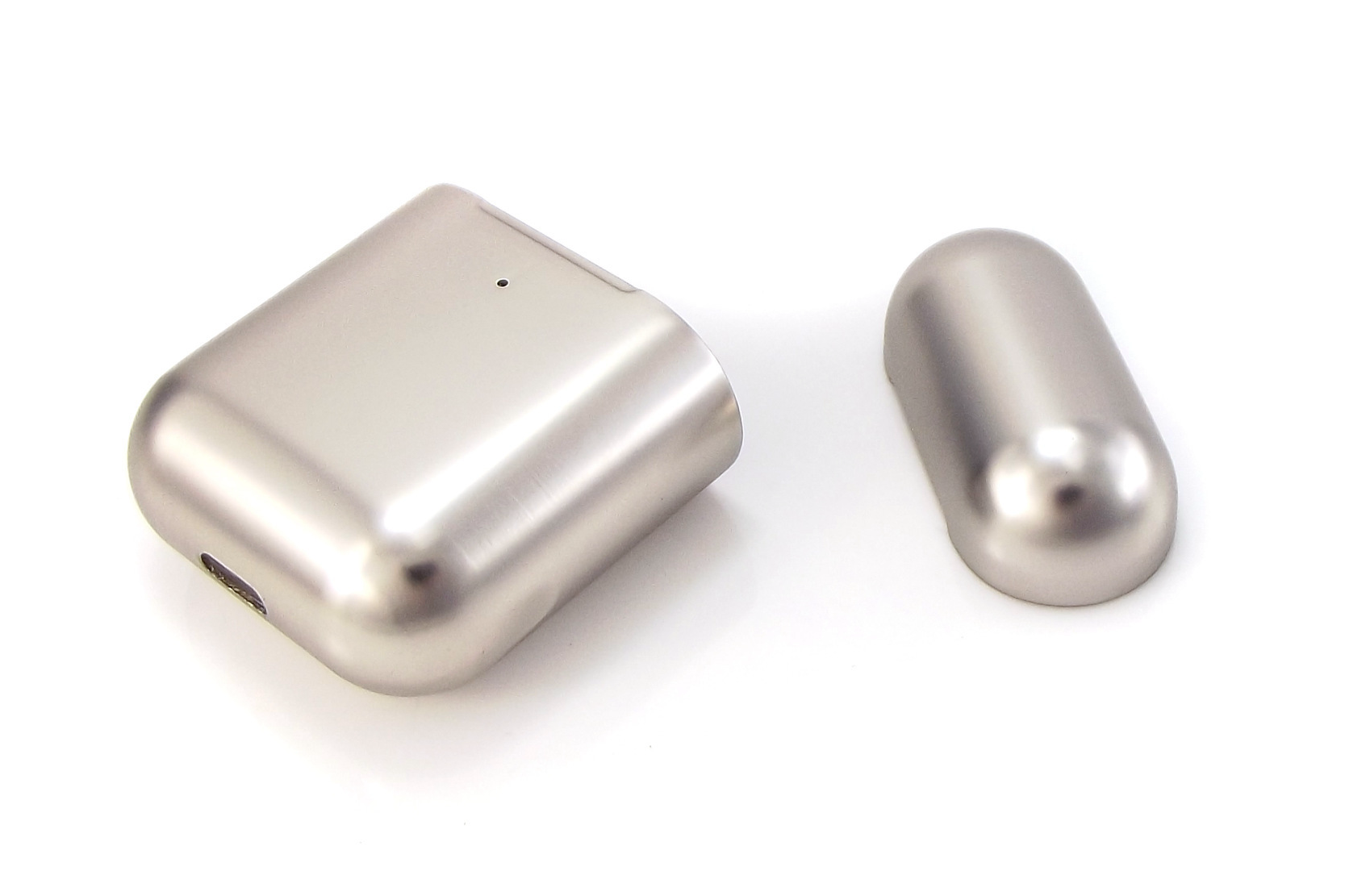
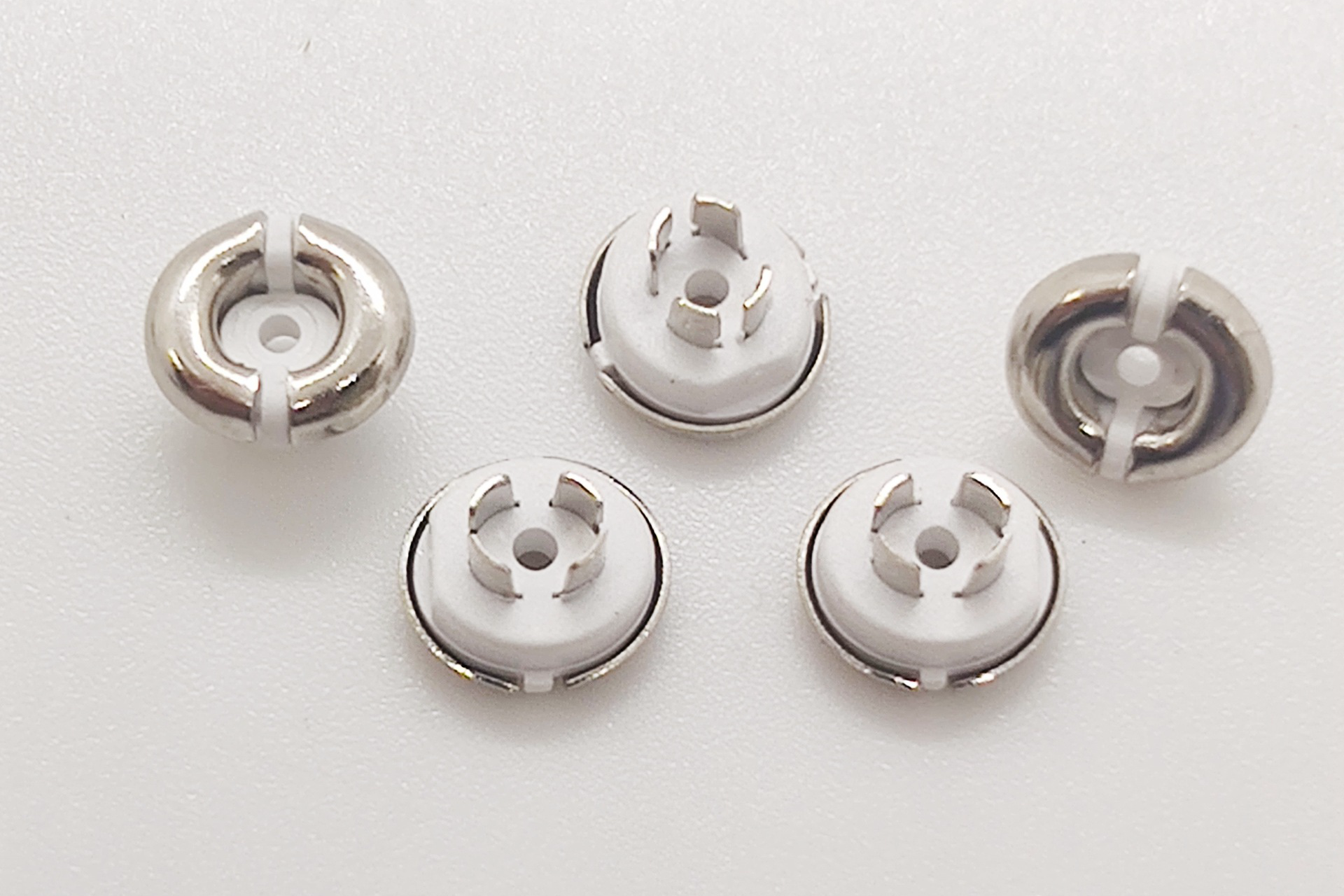
Charging Pins:
The metal charging contact pins and ports in the headset and charging case may be zinc die-cast parts. Usually, the charging pin is manufactured by the insert molding process. Among them, the metal part is die-cast by zinc alloy, and the injection molding process completes the plastic part
Screw Bosses:
The threaded metal bosses molded into the plastic housing to accept fixing screws are often zinc die-cast inserts.
Shielding:
Zinc die-cast parts are sometimes used as internal EMI shielding for the circuit boards and electronics.
Heat Sinks: Any small heatsinks required for dissipating heat from ICs or batteries may utilize zinc die casting.
Zinc Die Casting Introduction
Zinc die casting suits high-volume, precise, complex metal part production. It involves forcing molten zinc alloy into reusable steel molds under high pressure and temperature. The zinc alloy solidifies, taking the shape of the die cavity. Zinc alloys provide good dimensional stability and shock and impact resistance. They also have excellent electromagnetic shielding properties. Parts can have thin walls and fine details. No further machining is required as die-cast parts can be produced with tight tolerances. Die casting offers faster production rates than sand casting or permanent mold casting. It is ideal for making metal components with accurate, smooth surfaces and thin sections across various industries, including automotive, electrical, and consumer products.
Metal Injection Molding Parts
While less common than plastic or zinc die casting, MIM does have some niche applications in Bluetooth headsets when small, complex metal components with good properties are required. The process allows intricate shapes and can consolidate assembly compared to machined metals. But the volumes must be high enough to justify the initial tooling costs.
Antenna: The Bluetooth antenna is sometimes metal injection molded from nickel-based alloys or other metal powders for good radio transmission properties.
Decorative Covers: Intricate and delicate metal logo inserts or covers can be MIM'ed from various alloys for aesthetics and branding.
Structural Components: Smaller internal structural brackets or supports may utilize MIM for added strength while minimizing size and weight.
Screws: Specialized small screws needed to assemble the headset components can be injection molded from metal powders.
Contacts: The charging or data transfer contact pins and terminals may be MIM parts to get the required mechanical and conductivity properties.
Shielding: In some cases, lightweight MIM shielding parts are used instead of zinc die casting for electromagnetic shielding of circuits.
Hinges: Small metal hinge components for folding/rotating headset parts can utilize MIM for high precision.
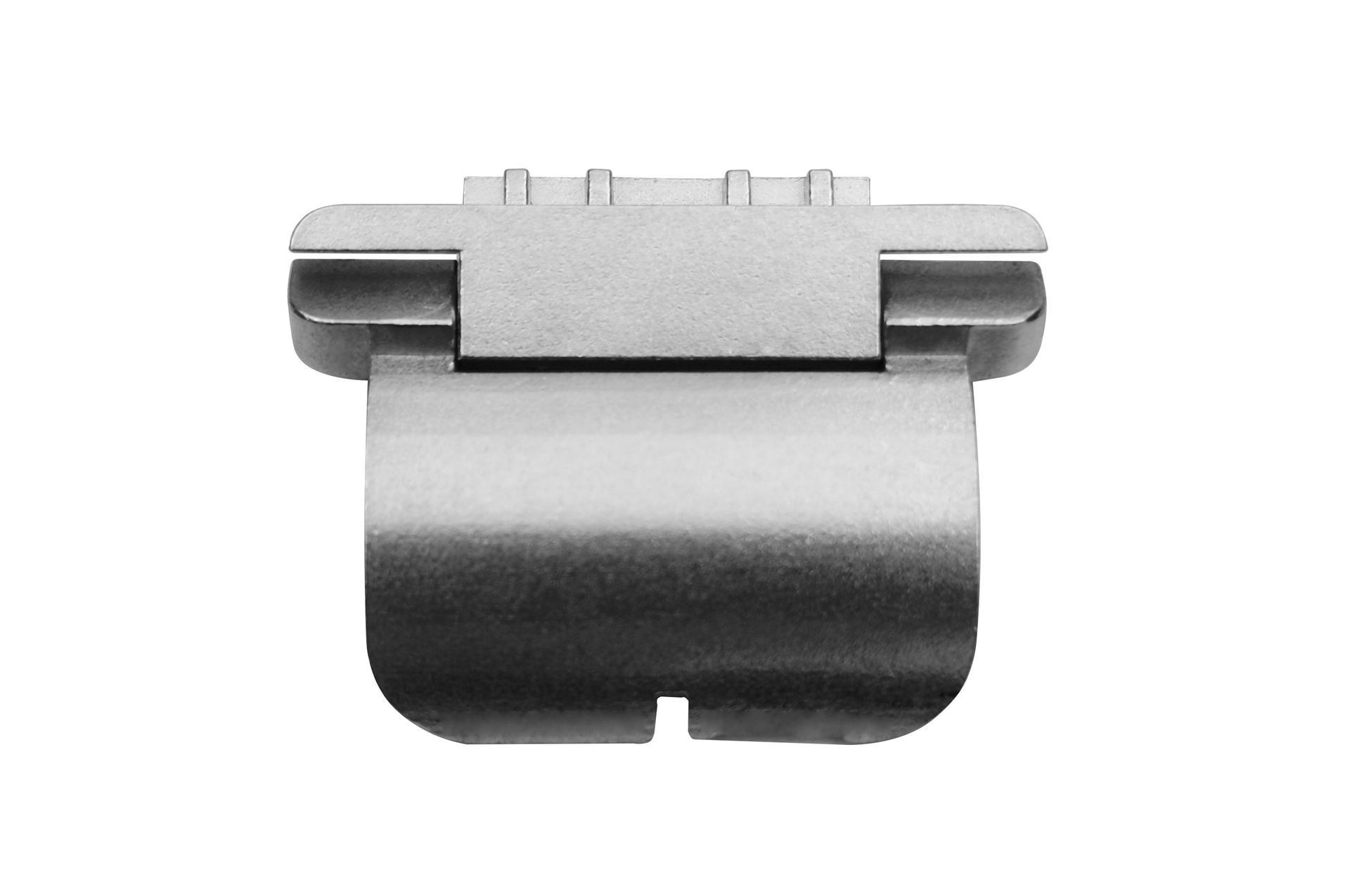
Depending on the product's positioning, injection molding or a zinc alloy die-casting process can also produce the hinge. High-end products generally use MIM technology, while low-end products can use injection molding technology. Of course, the cost is different.
What is Metal Injection Molding (MIM)
Metal injection molding is a manufacturing process that allows complex, high-precision metal parts to be mass-produced at low cost. In MIM, a metallic powder is mixed with a thermoplastic binder to obtain a feedstock that can be injected into a mold cavity under high pressure. The binder holds the shape. After molding, the green part is sintered to just below the melting point to burn off the binder and fuse the metal powder into a solid metal component. MIM combines the versatility of plastic injection molding with the superior material properties of metal alloys. It enables small, intricate metal components with good surface finishes to be molded to near-net shape. MIM is ideal for high volumes and is a cost-effective alternative to CNC machining metals.
Design Considerations of Bluetooth Headset Hardware
With these critical considerations during the design process, manufacturers can create comfortable, long-lasting headsets with the right style, functionality, and quality blend. Here are some key design considerations for the hardware components of Bluetooth headsets:
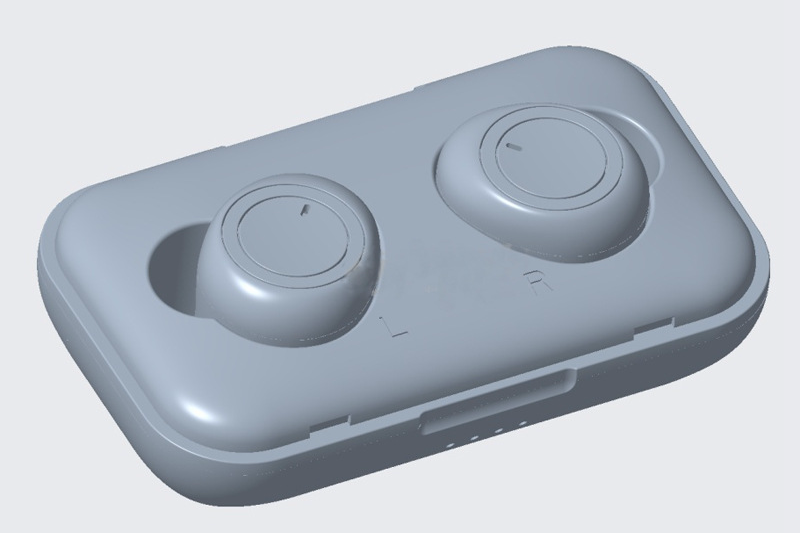
Battery Life: Balance battery capacity with weight; optimize power management features for standby and talk times. Allow for replaceable batteries.
Wireless Range: Antenna position, RF components selection, and Bluetooth protocol support determine the range from paired devices. Account for body shielding.
Ease of Controls: Buttons, touch controls, and mic must be conveniently placed for easy access. Minimize accidental inputs.
Cost Optimization: Select inexpensive but proven components, reduce unnecessary features, and leverage common parts across models to minimize BOM cost.
Aesthetics: Styling, special coatings, and creative shapes can differentiate headsets and appeal to user preference.
Assembly: ensure the rationality of design and production precision and that the assembly gap between parts is within the control range.
Ergonomics: The shape and size should allow for comfortable fit and wearability without causing pain or fatigue over extended use. Consider adjustable positioning, angled fittings, and lightweight materials.
Durability: Components like headbands, joints, and buttons should withstand drops, impacts, and other abuse from daily use. Use sturdy plastics, metal parts, and reinforcement joints.
Waterproofing: Exposure to sweat and the elements should be handled via waterproof coatings, sealed interfaces, and passive water drain holes.
Audio Quality: Speaker and acoustic components should be optimized for sound reproduction accuracy across different frequency ranges. Prioritize driver design.
Noise Isolation: Noise-isolating earbud shapes, passive dampening, and active noise cancellation help reduce ambient noise.
Why Choose Neway for TWS Hardware
Finding the perfect accessories for your Bluetooth headsets can be tough. But Neway makes it easy. They've been crafting custom accessories for 30 years using the latest techniques: injection molding, precision casting, sheet metal work, 3D printing...you name it. Whatever unique accessory you dream up, Neway can make it happen. And the quality? Just check their reviews. They're offering 20% off your first order so that you can try them out. There's never been a better time to ditch the boring old accessories and create something awesome for your brand. Let Neway bring your wildest ideas to life!
